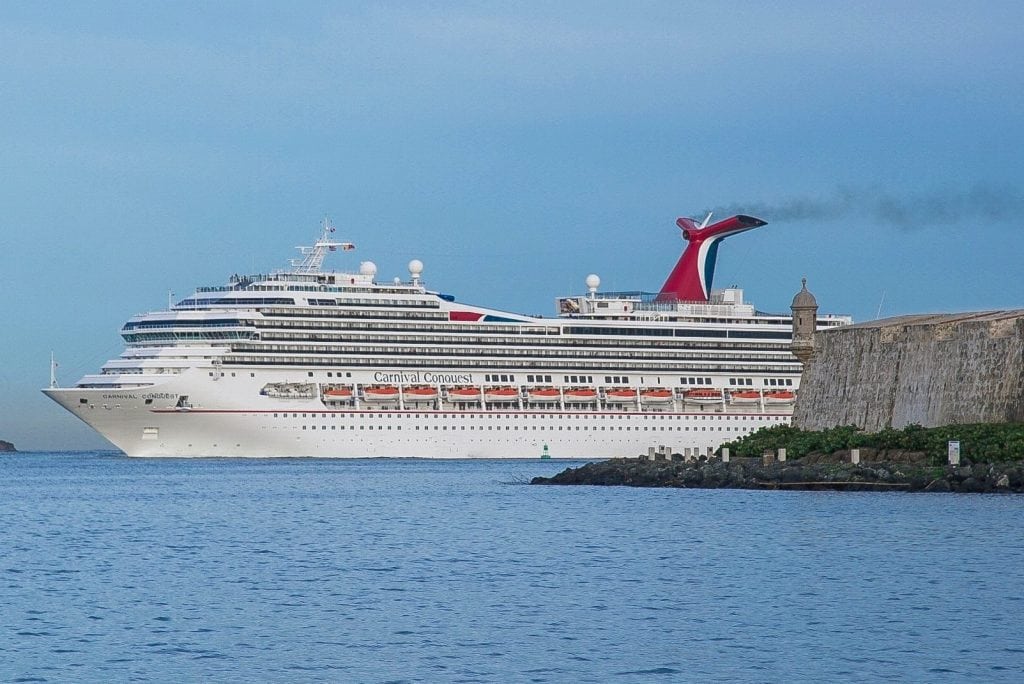Skift Take
Travelers held off on booking cruises to the Caribbean in the aftermath of the 2017 hurricanes. One big question is how many of them will want to risk sailing during this year's hurricane season — and at what prices.
Last year’s hyperactive hurricane season is still proving a drag for the cruise industry.
Carnival Corp. executives said Thursday that cruise bookings for the full year in the Caribbean are slightly behind where they were a year ago at lower prices. That relative weakness is due to lower demand for eastern Caribbean itineraries and especially sailings out of San Juan, Puerto Rico. The western Caribbean is experiencing higher demand at higher prices.
“For the eastern Caribbean and San Juan itineraries, we expect to optimize our revenue yields by holding price and being patient,” said Chief Financial Officer David Bernstein during a call with analysts to discuss results from the first fiscal quarter. “While the current perception of these regions is still somewhat impacted from last year’s hurricanes, our guests are having a great time and coming home very happy. So it’s just a matter of time before we are successful in getting the word out and improving things even further.”
The region was one of the few negatives in an otherwise upbeat earnings call. Carnival Corp., the world’s largest cruise company with nine brands and more than 100 ships, saw revenue for the quarter ending Feb. 28 increase from $3.8 billion in 2017 to $4.2 billion this year. Profit rose from $352 million to $391 million year-over-year.
Still, shares closed down a little more than a percent at $66.19 on a day that saw the New York Stock Exchange, on which Carnival is listed, fall by more than 2 percent. Shares of competitors Royal Caribbean Cruises and Norwegian Cruise Line Holdings also dipped as major indexes plunged on fears of a possible trade war with China.
Executives said the busy cruise planning months known as “wave season” at the beginning of the year delivered strong bookings. And excluding China, where the company is shifting its method of distribution in a way that will see sailings booked later, global cumulative bookings are ahead of the previous year at higher prices.
The problem in the eastern Caribbean dates back to late last summer, when Hurricane Irma and Hurricane Maria caused significant damage to popular cruise destinations including the U.S. Virgin Islands, Turks and Caicos, and Puerto Rico. Bookings for the first quarter of 2018 were already made by then, but demand fell off for the later parts of the year in the weeks surrounding the storms and during the recovery in the later part of 2017.
“There seems to be this panic right now kind of out there in the investment community that the summer Caribbean pricing is deteriorating,” Stifel analyst Steven Wieczynski said during the call. He asked if that might be due to any extensive discounting on the part of competitors; Carnival and other major players have been sticking to a “price integrity” policy by not slashing fares close to the date of voyages, even at the risk of sailing with empty cabins.
“We’re very confident that it’s related to some hurricane malaise hangover,” said Carnival Corp. CEO Arnold Donald. “We’re being patient. Our guests are having a tremendous experience. In fact, I would tell everybody waiting to see better pricing before they book [that] they’re probably just going to miss out.”
Donald said San Juan, where Carnival Cruise Line bases one ship, is “much more of a drag” than the rest of the Eastern Caribbean at the moment. About 16 percent of the company’s capacity is sailing in the eastern part of the region for the remainder of the year, with the Caribbean overall representing 28 percent of capacity. Carnival operates brands including Carnival Cruise Line, Princess Cruises, Holland America Line, Seabourn, Cunard, Costa Cruises, and other European brands.
Bernstein noted that Puerto Rico is not only a destination but also a source market for the ship that sails from San Juan.
“The hurricane did have an impact on that source market,” he said. “Albeit small, but it did have an impact.”
Donald insisted that the outlook isn’t bad for the eastern Caribbean, noting that the market is still strong on top of a record year.
“We’ve got a couple of little pockets that we have to address in terms of perceptions and stuff, but we’re doing that,” he said. “I wouldn’t want you guys walking away from this call thinking there’s weakness in the Caribbean because it’s just not true.”
Morningstar analyst Jaime Katz wrote in a note to investors that she believes Carnival is “positioned well” for increasing profitability this year.
“While worries about demand in the eastern Caribbean have generated concern after the aggressive 2017 hurricane season, we believe the issue has been overblown, with the majority of the company’s hardware operating outside of locations like San Juan and other key eastern Caribbean stops,” she wrote. “Additionally, commentary surrounding strength in western Caribbean itinerary demand indicate more tepid demand in the eastern Caribbean is likely to be transitory in nature, and that the firm’s brand intangible asset has not faltered.”
The Daily Newsletter
Our daily coverage of the global travel industry. Written by editors and analysts from across Skift’s brands.
Have a confidential tip for Skift? Get in touch
Tags: caribbean, carnival corp., china, earnings, hurricane maria, puerto rico
Photo credit: Carnival Conquest is shown in Puerto Rico in November 2017, the first of the cruise line's visits after Hurricane Maria struck the island. Carnival Cruise Line
